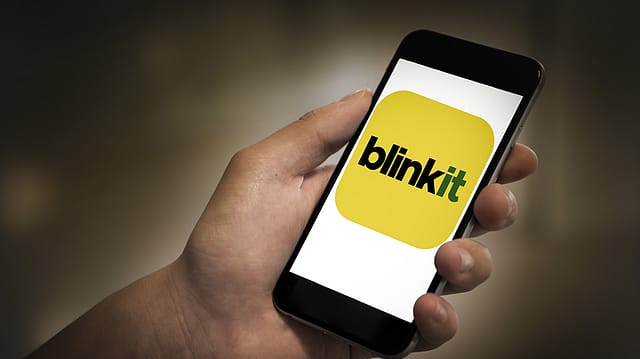Dunzo, Blinkit, Zepto new distribution platforms for FMCG majors
ADVERTISEMENT

Just before the onset of the pandemic in 2019-20, most sectors were beginning to warm up to buying and selling on e-commerce platforms. Launching e-commerce only products and collections was a far cry. The FMCG sector was the slowest adopter of e-commerce. The likes of HUL were testing the waters with their retailer/distributor app Shikhar, but there were hardly any takers. The FMCG major was also trying out concepts such as the Brylcreem (HUL's male grooming brand) store on Amazon. But there was a deeply entrenched belief that Indians would never shop for their monthly grocery or other FMCG products online. E-commerce barely contributed 1%-2% of most FMCG company revenues.
The Covid-19 pandemic completely changed the dynamics. The once e-commerce-skeptical FMCG industry has been among the fastest adopters of not just e-commerce but also quick commerce. If it's 9 pm and you suddenly realise that you have run out of bread and eggs, platforms such as Blinkit, Zepto, Dunzo or even Swiggy's Instamart would reach them to your doorstep. Though their business models have often come under the radar, FMCG majors have realised that they can't shy away from being present here.
According to a recent report by Nuvama Institutional Equities Research, FMCG companies have reported a notable uptick in contribution from e-commerce and quick commerce channels. The report says that 10% of HUL's ice cream sales in Q2 of FY23 came from quick commerce, Tata Consumer Products garnered 9.2% of its sales in Q2FY23 through e-commerce (versus 7.5% in FY22). Similarly, food major, Nestle India, also racked up 7.2% of sales in Q3 CY23 through 'quick commerce' and 'click and mortar', while Dabur notched up 9% of its Q2 FY23 sales (versus 2–3% four years ago) via e-commerce, which jumped 50% YoY. "We argue the ongoing trend shall strengthen and further drive consolidation in favour of larger FMCG players as start-up capital for small D2C players is drying up. Recently, HUL and Marico have acquired a few small D2C players, which lends greater credence to our view," explains Abneesh Roy, head of Research Committee, Nuvama Institutional Equities Research.
December 2025
The annual Fortune 500 India list, the definitive compendium of corporate performance, is out. This year, the cumulative revenue of the Fortune 500 India companies has breached $2 trillion for the first time. Plus, find out which are the Best B-schools in India.
Today almost all the FMCG majors have their own direct-to-consumer e-commerce platform. While HUL has U-Shop, ITC has ITC Store and Nestle's D2C platform is MyNestle. So, what is it that consumers mostly buy from ecommerce/quick commerce platforms? They still prefer the local kirana stores or modern retail stores or even platforms such as BigBasket for their monthly grocery. Quick commerce is largely for impulse needs. The Nuvama report says, millennials, particularly Gen Z consumers in mid-to high-income households in metro and tier-1 cities, drive this demand. Quick commerce players currently service about 0.3 million orders daily.
Over the last two years, quick commerce, according to the report, has seen a significant uptake in urban areas, mainly in metros and tier-I cities as these cities have higher internet penetration, working population and technological awareness vis-à-vis tier-II and below cities. Snacks, fruit and vegetables are the top two products ordered on quick commerce portals. This clearly indicates Indians are mostly using the service as a top-up for their household grocery needs.
A recent LocalCircles report further endorses the trend. It says that one in four Indian households that shop for groceries online uses quick commerce apps to buy last-minute essentials and indulgence foods. One in 10 households buying groceries online places over 10 orders a month via quick commerce apps. Of those households that are using fast delivery apps, 71% are using them to purchase last-minute essentials or indulgence foods; 29% are buying even their regular groceries. Around 86% of those who buy groceries online say top criteria for them are selection, availability and value; for 8%, it is fast delivery.
The FMCG majors obviously can't afford to ignore the quick commerce platforms. HUL is partnering with Swiggy and Zomato for its project called "Ice Cream Now" to promote in-home consumption. In fact, over 20% of the company's revenue in the past couple of years has been coming from D2C, ecommerce and B2B. Its retail/distributor app has over 10 million retailers ordering its products through the app.
Quick commerce platforms have their own share of woes which they need to quickly address to be profitable and be around for the long-term. The 10-20 minute delivery promise is unsustainable. No wonder the likes of Dunzo have started incentivising customers who are willing to wait for 60 minutes for their delivery. "The 10-minute delivery is mostly impulse, and is one off. Most consumers want to buy fresh, and buy what is required for their house, and that they don't need in 10 minutes," Dunzo founder, Kabeer Biswas, had said in an earlier interview with Fortune India.
